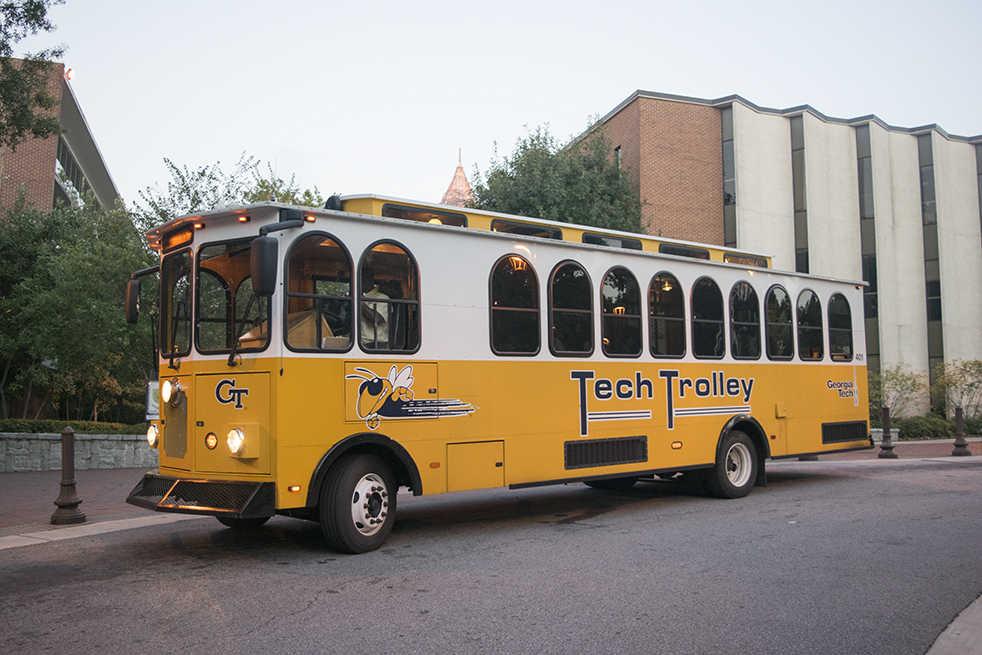When coming to Tech, three things are almost guaranteed: caffeine addiction, food poisoning and an adversarial relationship with the department of Parking and Transportation Services (PTS).
The perennial boogeyman on campus to some, PTS undoubtedly evokes more anger than any other acronym at Tech, a school with perhaps the highest acronym density on this side of the Mississippi. But, as easy as it is to hate an entity best known for towing cars and writing tickets, PTS’s Director of Parking Operations Glenn Kurtz believes that the organization’s perceived downsides are something of a necessary evil in an operation that, as a whole, keeps Tech’s campus moving.
“There are definitely some preconceptions out there,” Kurtz said in an interview. “Preconceptions and reality are missing each other. We make mistakes, there is no doubt about it. And we own up to that. We work every single day to do the right thing.”
To students frustrated with high parking fees, questionable tickets and bunched busses, Kurtz’s words probably offer little in the way of comfort.
A group consisting of Kurtz, PTS Director of Business Operations Sherry Davidson and Director of Transportation David Williamson met with the Technique recently to address specific student concerns regarding PTS. One of the most common student complaints related to a lack of available parking.
“The campus is very large and we have different challenges on different parts of campus,” Kurtz said. “One of our goals is to have parking available for the entire community, and that includes faculty, staff, students, everybody. We work very hard to issue a certain number of permits based on the number of spaces that are available. That’s not to say that we hit the nail on the head every time, but that’s
our approach.”
Though students normally have no issues getting a pass, certain areas like the Management deck and Peter’s are often so full that drivers are forced to park elsewhere on campus, usually farther away from their destination than they’d like.
“We look at historical data from, say, the past three years, to see the trends,” Davidson said of the process. “We set goals for these locations. We try to cut them shy of the goals before the beginning of the school year because we don’t know from year to year. Typically two weeks after school starts we count to see what availability looks like and go to our waitlist. We actually have more parking spaces than parkers. In the most desired locations, folks will see that there isn’t enough space so they have to move to the outskirts of campus.”
To help foster better communication with the student body, the department is testing a program in which cameras, placed in decks throughout campus, monitor the amount of available parking and relay that information to students via app.
The idea is still in a pilot stage, but current freshmen may very well see full implementation of the program before they walk the graduation stage.
Controversial parking tickets were also a heavy point of emphasis for students, though the department believes that the frustration is simply due to a lack of adequate communication.
For example, a common myth going around is that the parking department is funded mainly through citations.
“Parking is primarily funded by parking fees,” Davidson said. These are the one-time fees that students pay when purchasing a parking permit. “There are a couple of other revenue streams like events, visitor parking, things like that. Citations make up about four percent.”
The department also allows students to contest any parking tickets they have received. In most cases, according to Davidson, the appealed citation is reduced or nullified altogether.
On the bus side of the operation, Williamson believes that the department is also making big strides.
The accuracy of bus wait times, for example, has been a common complaint in recent years.
“If you’ve got four busses, let’s say on the red route, and one of those busses isn’t connected to the GPS, all the info coming in is wrong,” he said. “The sign may tell you ten minutes, and all of a sudden the bus pulls up. The NextBus system is just reporting info that we pass to it. If our data is missing, the prediction is going to be off.”
The GPS systems began on a 2G network, but due to capacity issues, the department is in the process of moving to 3G. This, combined with the hiring of an extra staff member, has led to what Williamson calls a “significant improvement.”
The department is also working on various solutions to the problem of “bus bunching,” when busses on the same route end up right next to each other.
To help bring these issues to light within the organization, Asher Berman and Sam Crane serve as mediators between PTS and the student body. They serve as co-chairs for SGA’s PTS committee and meet with Kurtz, Davidson and Williamson biweekly.
“We are supposed to provide student input and engage with the leadership of PTS so that they understand student priorities,” Berman said. “What we try to do is give PTS the tools to be able to communicate better with students.”
Through the efforts of Berman, the leadership of PTS and the entirety of the student body that has voiced concerns, the department is slowly working to become an asset in the eyes of the students rather than a burden.
To help them with that goal, PTS encourages all students with questions or concerns to contact either the SGA representatives or the department directly.
